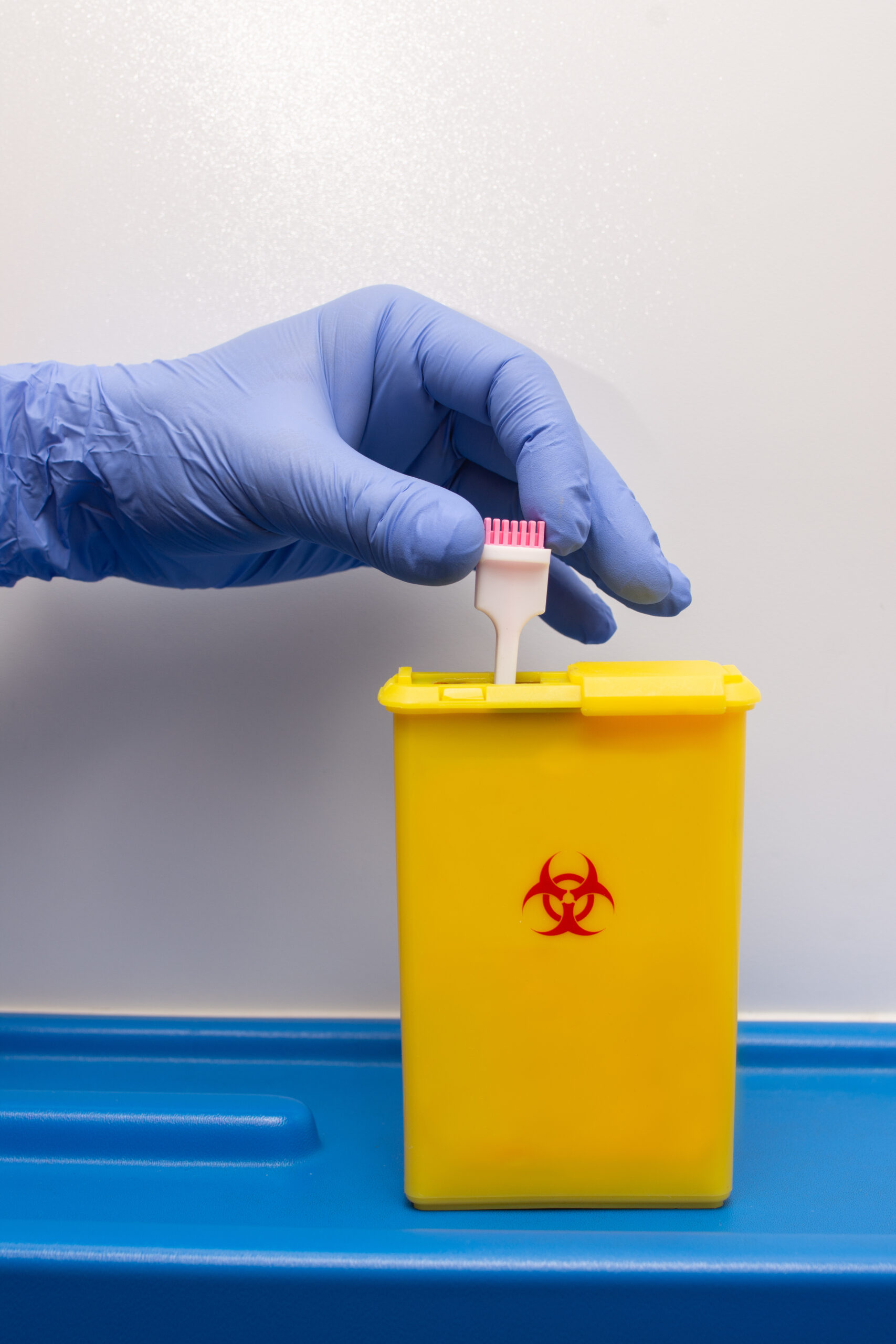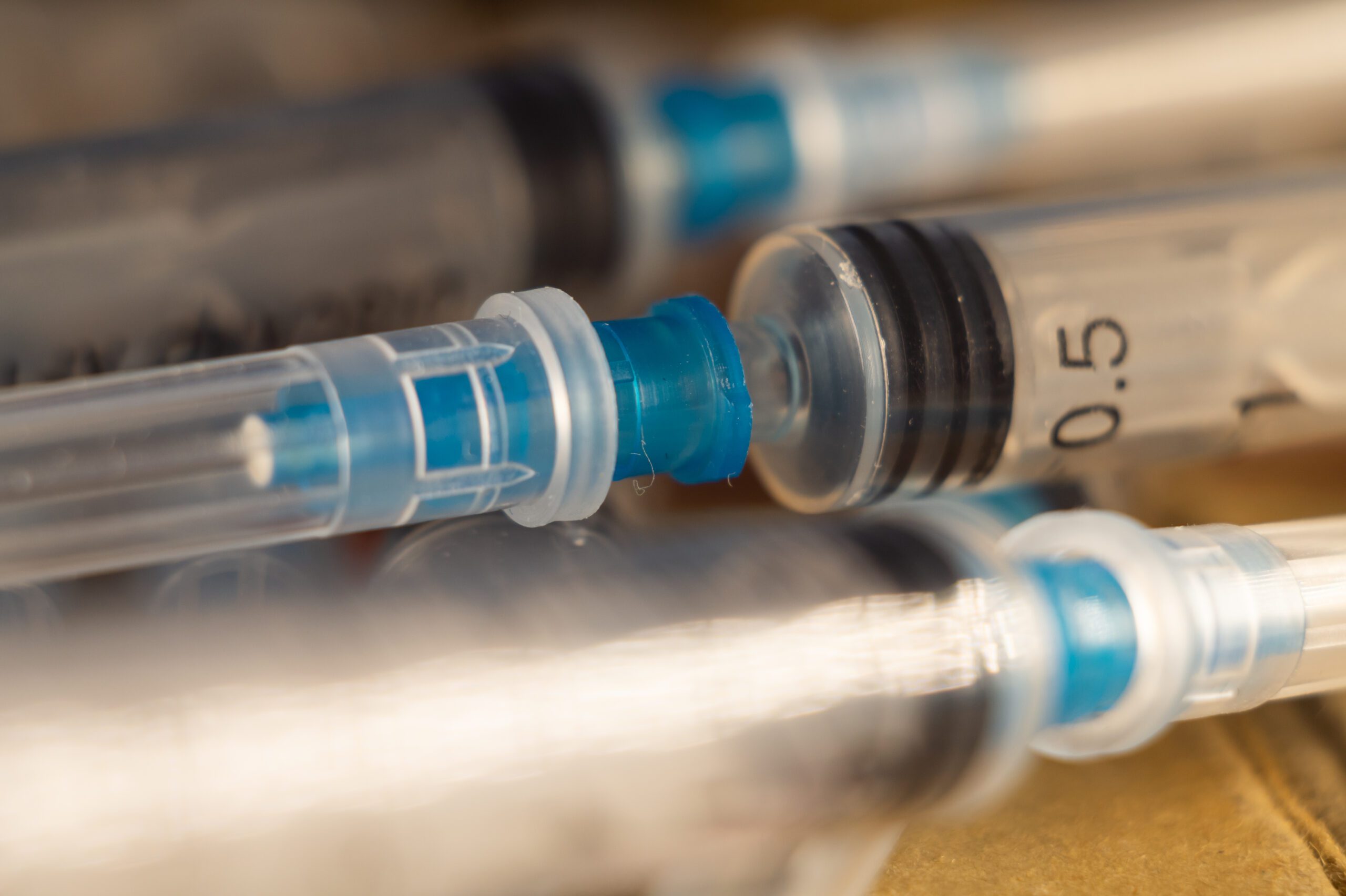The vaccine has arrived — the hero is here to save the day! Regardless of which COVID-19 vaccines people get, 2021 is slated to be a better year with more time out from under COVID-19.
But don’t take your mask off and put the hand sanitizer away just yet. It’s true, there are two approved vaccines and three more in Phase 3 ready come down the pipeline.
The question is: How long will it take to see improvement locally and nationwide?
How do the COVID-19 vaccines work? How many doses do we need to get, and how is it distributed? When can we be free of this COVID-19 nightmare? Below, we’re going to cover all that and more.
Will we be able to switch out our hand sanitizer for suntan lotion next year? Keep reading to find out.
About the First Two COVID-19 Vaccines
There’s a lot of information about the vaccines on the internet that’s hard to understand. Sometimes we don't even know if the source is truthful or trustworthy. For that reason, we’re going to outline the two vaccines here straight from their datasheets from the FDA. We’ll try to use clear language to help you on how the vaccine is used, what some warning signs of an allergic reaction are, and to help dispel any rumors you may have heard. Neither drug has been formally approved or licensed by the US Food and Drug Administration (FDA) at the writing of this article. However, they’ve been authorized for use under the EUA. The EUA is the Emergency Use Authorization powers given for emergency use by the FDA. This is an important distinction, as each vaccine is still being studied and clinical trials are still taking place. The EUA can be terminated or revoked by the FDA if necessary. Please remember that while these are summaries and we’re trying to make it clear, the best place to get information is from your healthcare provider, vaccination provider, the CDC, FDA, and the vaccine manufacturers themselves. For that reason, we’ve provided various links to datasheets and information given by proven government authorities and manufacturers to try and stem the tide of rumors and false information regarding these vaccines.The Different Kinds of Coronavirus Vaccines
Vaccines work by using the body’s own amazing ability to protect, defend, and repair itself. When our body identifies an illness it formulates a defense against it with macrophages, B-lymphocytes, and T-lymphocytes doing a lot of the heavy lifting. Macrophages are like WW2 B-52s that carpet bomb areas of infection, swallowing up foreign bodies and dead or dying cells. The parts they leave behind stimulates the body’s response with antibodies. B-lymphocytes are the cells that produce antibodies that attack leftovers that the macrophages don’t eat. T-lymphocytes, sometimes called memory cells, attack cells in the body that have already been infected, and prompt the macrophages to act. The T-lymphocytes quickly go into action if the body encounters the virus again. B-lymphocytes produce antibodies designed like laser-guided missiles to attach to the virus and kill it. mRNA Vaccines, like the Pfizer-BioNTech COVID-19 vaccine, contain material from the virus that teaches our bodies how to destroy it. The mRNA in these vaccines is not the virus itself, but rather just inactive pieces of it, similar to what the macrophage would leave over for the B- and T-lymphocytes to go to work on. Protein subunit vaccines and Vector vaccines work differently than the two vaccines approved under the EUA.The Pfizer-BioNTech COVID-19 Vaccine
The first of the two vaccines is the Pfizer-BioNTech COVID-19 vaccine meant for SARS-CoV-2, which carries inactive portions of mRNA from the virus. Before getting the vaccination, you should tell the provider about any allergies, fever, bleeding disorders, blood thinners, if you’re immunocompromised or on medication reducing your immune system, pregnant or plan to be, breastfeeding, or if you’ve received another COVID-19 vaccine. If you’ve had an allergic reaction to the first dose of the vaccine or an ingredient in the vaccine you should not get it. The vaccine is given as an injection in muscle tissue, and a second dose is given three weeks later. The duration of protection is currently unknown. But it’s been shown to prevent COVID-19 following the two doses given three weeks apart in clinical trials. The trials were of about 20,000 people, 16 years of age and older, who received at least one dose. The side effects that have been reported after getting the vaccine include injection site pain, swelling, and redness, as well as tiredness, headache, muscle pain, chills, joint pain, fever, nausea, a general sense of feeling unwell, and swollen lymph nodes. A remote chance of a severe allergic reaction would occur within a few minutes to one hour after receiving the vaccination. Symptoms of an allergic reaction are difficulty breathing, a fast heartbeat, a bad rash over the whole body, dizziness, weakness, and swelling of your face and throat. Pfizer has warned that these are the only known side effects and allergic reactions. Other serious and unexpected side effects could occur that they haven’t seen before, as it is still under clinical trials and study, even though it’s been approved for use. As always is the case with severe allergies or side-effects, call 9-1-1 or go to the nearest hospital. Something to keep in mind is that while there is another vaccine from Moderna available, there’s no information on using one vaccine in conjunction with other vaccines (COVID-19 vaccines or otherwise). A very important point is that the vaccine does not contain SARS-CoV-2 and cannot give you COVID-19. The side effects and allergic reactions are purely immune responses to the vaccine. When you get your first dose, you’ll be given a vaccination card to show you when to get the second dose and to prove you have been vaccinated already, should it be required at some point by authorities. Further reading can be found on the CDC page for the vaccine: https://www.cdc.gov/coronavirus/2019-ncov/vaccines/different-vaccines/Pfizer-BioNTech.htmlModerna COVID-19 Vaccine
The Moderna COVID-19 Vaccine has a number of datasheets available for professional vaccination providers, and vaccine recipients and caregivers. The FDA also has its own datasheet provided by Moderna on its website. The Moderna COVID-19 vaccine is also administered as a two-dose series, with a four-week gap between doses. Moderna asks you to tell your vaccination provider about any medical condition or allergies, the same as the Pfizer-BioNTech Vaccine. The Moderna COVID-19 vaccine has only been approved for use on individuals 18 or older, where the Pfizer-BioNTech vaccine has been approved for those 16 and older. The Moderna vaccine also has the same warning as the Pfizer-BioNTech vaccine about allergic reactions. If you’ve had an allergic reaction from a previous dose or known to react to any ingredient in the vaccine, you should avoid it. This vaccine also contains mRNA but has a different chemical composition stabilizing it. If you were allergic to an ingredient in the Pfizer-BioNTech vaccine, check with your vaccination provider if it is also in this vaccine. It also is given in muscle tissue as an injection. However, the two doses are given one month apart. If you receive one dose, make sure to go back for the second one. This vaccine has been used on 15,400 individuals over the age of 18 during the clinical trials. These persons have received at least one dose of the vaccine. It’s an ongoing trial, but it’s been shown to also prevent COVID-19 after two doses, although the duration of protection is unknown. The signs of severe allergic reaction given in the datasheet are the same: difficulty breathing, swelling of face and throat, quickened heartbeat, a bad rash covering the body, dizziness, and weakness. Some of the side-effects found include pain, tenderness and swelling of lymph nodes in the same arm of the injection, and swelling, hardness, and redness at the injection site. Systemic side effects include fatigue, headache, joint pain, muscle pain, chills, fever, and nausea and vomiting. If you are having severe allergic reactions, as always call 9-1-1 or go to the closest hospital immediately. If there are side effects that don’t subside, contact your healthcare provider as soon as possible. The Moderna vaccine is in ongoing clinical trials, and more side effects may occur than listed — some of which could be severe. Also, there is no information on using the Moderna COVID-19 vaccine along with other vaccines (COVID-19 vaccines or otherwise). The Moderna COVID-19 vaccine has more information on the CDC website at: https://www.cdc.gov/coronavirus/2019-ncov/vaccines/different-vaccines/Moderna.htmlProduction vs Population: When Can I Get the COVID-19 Vaccine?
In the United States in 2020, there’s an estimated 19.2 million that have definitely contracted the SARS-CoV-2 virus and the subsequent COVID-19 disease, with over 330,000 killed. It’s understandable to be asking “Do I need a COVID-19 vaccine?” and "Can I get the COVID-19 vaccine?” The answer is that you should try to get the vaccine as soon as you qualify for it. The projected trends are that from this point forward daily deaths could double, as well as the number of active infections tripling. When will you qualify for the vaccine, and how is it going to be distributed? Most states already have their initial shipments with more on the way. More on that now, so keep reading.How Are the COVID-19 Vaccines Distributed?
The vaccine recommendations were made with three priorities in mind:- Reducing serious disease and loss of life as much as possible
- Preserving societal functionality
- Reducing the COVID-19 pressures on ethnic, cultural, and societal disparities
The Phases of Vaccination: What Are They?
The divisions of the phases can be a little confusing, and some people fall into two groups in separate phases at times. In that case, you can try to get in a bit earlier than others in your age or occupation group. The phases are as follows:- Phase 1a
- Phase 1b
- Phase 1c
- Phase 2
Phase 1a
The CDC recommended on December 3, 2020, that the first supplies of the COVID-19 Vaccines from Pfizer and Moderna go to long-term care facility residents and to healthcare personnel. This makes sense because, after this point, healthcare personnel will not spread the virus as they vaccinate and take care of the incoming waves of COVID-19 patients.Phase 1b
Phase 1b includes frontline essential non-healthcare workers and people aged 75 years and older. The phase includes at least 49 million people and will help to ensure we have coverage across critical infrastructure sectors. An example would be the US military, cybersecurity, and DHS. It is believed that 45% or more of all essential workers are made of people of color that have an ethnic disparity and are disproportionately affected by the virus. Since Phase 1b includes a great number of racially diverse workers included by this phase, it’s very on point with the third major priority of reducing societal disparity while preserving societal functions.Phase 1c
Phase 1c covers people aged 65-74 since they bear the highest risk of hospitalization and death from COVID-19. Since many are covered by Phase 1a as residents of long-term care facilities, having this as the first priority of Phase 1c will finally give full protection to this segment of the population. Next comes people aged 16-64 with underlying medical conditions that are known to cause complications with COVID-19. Since it is a fairly long list of conditions that cause increased complications with the virus, many people are covered by this segment, especially in relation to respiratory issues. Other essential workers in food service, logistics, construction, finance, IT, energy, and more are also covered by this phase.Phase 2
Lastly, we have Phase 2, or the general population of those 16 and older. Considering we have a population of around 311 million, that leaves about 111 million left to receive the vaccine. To vaccinate all individuals we need at least 622 million vaccine doses to become available by the end of phase 2.What Will Happen Until We Have General Immunity?
Less than 20% of the over 11 million vaccine doses have been used. Only 2.1 million people have gotten the first dose so far, or 18.5% of the available doses. Even worse, that’s only 0.6% of the nation that has already been vaccinated. To get general immunity or “herd immunity” as it’s sometimes called, more than 50% of a group and ideally up to 60%-70% is necessary. “But it’s 90% or 94.5% effective, so almost anyone who takes it is immune,” you might respond. The likelihood of the vaccine remaining 90-95% effective en masse is low, according to experts. Phase 3 trials are done on thousands of people at various levels of age and health. But given the accelerated rate of development and possible viral mutations we could see in coming months, the efficacy is almost certain to go down as millions take the vaccine. Even if the vaccines end up providing 80% efficacy with prolonged immunity and 25% of the population refuses or is unable to take the vaccine, that brings us to about 186.6 million Americans with immunity. Barely 60% of the population, but 60% nonetheless.When Will We See Results?
Until the time we get herd immunity, hopefully about six months from now, we all need to keep our PPE protocols in place to prevent the spread of the virus. Remember, at the end of December 2020, there are already almost 20 million cases total, with nearly 200,000 active cases. That is potentially almost 40 million fewer doses to hand out, if they even retain immunity from COVID-19. As it stands, almost 6% of the USA population has already had COVID-19.More Help Is On the Way
Currently, there are at least 91 vaccines being researched, with only one abandoned. There are three current phase-3 large-scale clinical trial vaccines in the works. Those are:- AstraZeneca’s COVID-19 vaccine
- Janssen’s COVID-19 vaccine
- Novavax’s COVID-19 vaccine
The Road to Recovery: The Onramp Is Close
The 311 million Americans that are looking for the nation to recover are not the only ones looking for a way out of the mess that the coronavirus has made of 2020. Around the world, there are billions of people putting their hope in these COVID-19 vaccines too. With every vaccine approved, it represents millions of doses more that can go out. With a little hard work and a lot of patience, hopefully, by summer we’ll have more than 8 billion doses across the world. If we can get 60% or more immunity throughout the world by May, we might enjoy the first "normal" summer in two years. Until then, keep using your PPE protocols and make sure you're stocked up on all the supplies you need.Recent Posts
-
 Yesenia05/23/2025
Yesenia05/23/2025Syringe Filters-Why They Matter in Laboratory Applications
-
 Yesenia05/15/2025
Yesenia05/15/2025Proper Disposal of Used Syringes and Needles: A Complete Guide
-








